We seem to have entered a new phase in historical memory vis-à-vis the New Left in Japan in which the focus is gradually moving away from an emphasis on the spectacular showdowns between the state and protesters (usually shown through archival footage) or on the grisly internal violence (usually shown through re-enactments) to pinpoint the aftermath, the afterlives. The default tone when doing so is typically elegiac, with ageing talking heads recounting what happened during the struggle, and then the subsequent struggle to find meaning after it was supposedly done and dusted. This trend is perhaps epitomized by recent feature-length documentaries about the Sanrizuka movement, the Haneda Airport clash of 1967, and the East Asia Anti-Japan Armed Front.
Much harder to deal with, though, are the people who fell between the cracks (the dropouts and past activists who didn’t pursue regular jobs, etc.) and the forgotten radicals — those ones still languishing in prison or who got out but didn’t (either by choice or otherwise) achieve the “legacy” of their peers who published memoirs. In this respect, a kind of hierarchy exists among militants in both their activism and historical memory. Some, perhaps many, of course, wanted to be forgotten, to live a quiet life.
Koarashi Kuhachirō’s book Hōki ni wa itarazu: Shin-sayoku shinin retsuden [Failed Uprisings: Lives of the New Left Dead] (Tokyo: Kōdansha, 2003) deals with the fates of several lesser-known radicals, and I included various snippets of their stories in my book Dissenting Japan (2016), though there are richer narratives that deserve far more than just an aside or endnote.
One is Kamata Toshihiko, who was convicted of carrying out a bombing in Shinjuku on Christmas Eve, 1971. A warning phone call was apparently given but there was not enough time to act. The bomb, which was disguised inside a small Christmas tree left in a bag near a police substation opposite the Isetan department store, exploded, injuring seven, including a police officer.
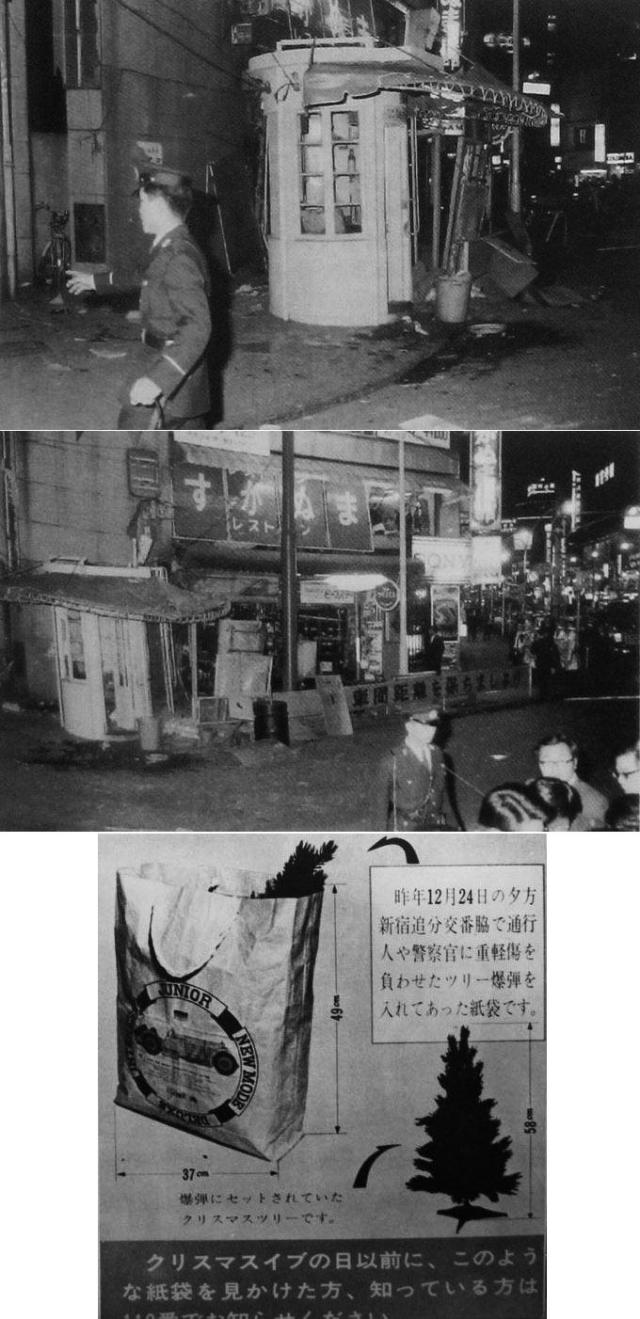
Newspaper images of bomb in Shinjuku on Christmas Eve, 1971
The incident was one of several examples of militant activism in 1971 and part of a surge in bombs and violent incidents since 1969, most notably with the emergence of the Red Army Faction that year. Such militancy was not completely new (examples of direct action and violence predate the post-Anpo second wave of New Left factions in the late 1960s, plus lone wolf incidents had occurred throughout the decade). But it was also accompanied by rhetoric from the New Left promising a coming revolution. The mass media responded with its own intense level of coverage, and the state then reciprocated in kind with a police crackdown and harsh judicial measures.
The attack in Shinjuku was pinned on the so-called Black Helmet Group. Helmets were, of course, a vital part of the New Left factions’ “costume”, decorated with their respective name and symbol. “Black helmet” is a somewhat ambiguous label, used by the police and others to signify non-affiliated activists and cells who did not belong to the major sectarian streams, and also Kamata’s specific group, which was not linked to a major New Left faction (though had interactions on an individual level with the Red Army Faction). Kamata was on the run for eight years but was eventually caught and put on trial. He received a full-life sentence and remains behind bars.
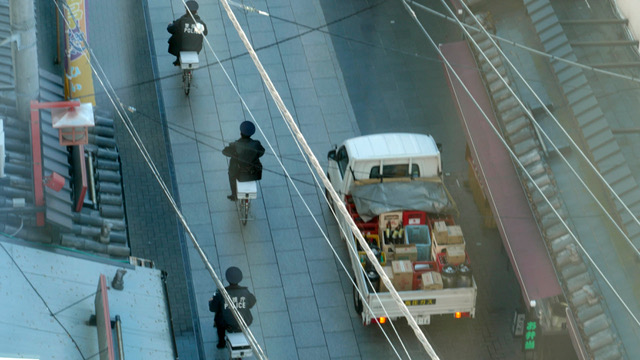
News From K runs from 27 October to 3 December at the innovative art space Asakusa, located inside a small house in the titular district of Tokyo. It is described in the publicity materials as an “experimental video sketch in progress” by Heidrun Holzfeind, an Austrian artist whose previous work about Japan, the time is now. (2019), screened at Asakusa in 2022. Holzfeind is set to develop the project into a full-length film in the future, but the current iteration comprises a short film called The 49th Year.
Divided into eight sections set in several locations around the country (Yamaguchi, Tokyo, Sendai, Fukushima, Kosagawa), The 49th Year features landscapes that Kamata may have seen during the life he led before his apprehension in 1980, and a female narrator reading out Kamata’s letters written from behind bars in which he shares the history of his group and his observations of Japanese society, economics and capitalism.
In preparation for her project, Holzfeind was able to meet Kamata by connecting with his support group, which maintains that Kamata’s full-life sentence is unjust and was handed out because of the anti-state, anti-capitalist nature of the bombing. Such grassroots networks are a vital part of social movement’s infrastructure in Japan, providing support when arrested, during trial and then during the protracted imprisonment. They also organise events and publish newsletters, often linking the individual prisoner’s case with larger issues like the treatment of prisoners and the death penalty.
This is all off-screen, with the filmic space restricted to banal and everyday scenes, on rural dilapidation. A port. A mountain. A suburban parking lot. A farmer in a field. The detached gaze is sometimes almost voyeuristic, like the shots of a private house or restaurant now abandoned. Holzfeind is the latest film-maker to take up the mantle of landscape theory, demonstrating its plasticity and the resonance it continues to have as a filmic practice and mode of engaging with questions of state power.
Landscape theory (fūkeiron) was developed by Matsuda Masao from around 1969 across a series of seminal texts. The early and most emblematic example of the theory in practice was A.K.A. Serial Killer, an experimental film made by Matsuda, Adachi Masao and others about the spree killer Nagayama Norio, but with the “protagonist” himself absent from the shots of landscapes that he presumably witnessed before his apprehension by the authorities.
Though Kamata’s trajectory seems similarly peripatetic, The 49th Year avoids the obvious choice of landscapes like the site of the Shinjuku bomb, and also eschews the focus on transportation, mobility and speed that A.K.A. Serial Killer has, or the displays of overt state power like the Self-Defense Forces parade that memorably features in the 1969 film. Perhaps only the shots of the oppressive-looking prison in Miyagi are analogous. The almost-illiterate Nagayama was a drifter for socioeconomic reasons; the well-educated Kamata was for political ones. Though contemporaries, their contexts differ significantly, as do those of the film-makers, and the resulting films reflect this.
A.K.A. Serial Killer and The 49th Year diverge in other ways. Instead of the chilling homogeneity that Adachi, Matsuda and their collaborators detected underneath the beauty of the provincial locations, the disparate sites in Holzfeind’s film are haunted by the efficacy and astute perspicaciousness of the disembodied voice of the prisoner, who is not wholly absent from the film like Nagata is from A.K.A. Serial Killer, but rather half-present, a voice from beyond the wall of his penal location. Holzfeind’s approach effectively captures Kamata’s purgatorial existence, his state of limbo, and also manages to do something more than simply emulate the work that serves as her model.
Even in prison, Kamata is a loner. Political prisoners are the most ostracised in prison, he says. They lack a common language in which to speak to their fellow inmates. And the time he spent on remand before his conviction has affected him physically, leaving him unable to march in the yard like the others.
Despite his incredible isolation, Kamata is acutely observant about the state of Japan. “This country has been built up at the expense of the weak.” He compares the forced labour in prison that he must participate in (making boots). No matter the skill of the prisoners in what they do, the system cannot compete with mass production on the Asian continent. “Prisons are the ‘Asia’ of Japan,” he muses. Small companies are unable to expand with the stagnant economy and competition from elsewhere in Asia, so they turn to prions as a source of cheap labour. Some days, Kamata writes, are so hectic that he doesn’t even have time to think deeply. The labour logic of prisons in Japan negates the nominal reason for a sentence: that the convict develop remorse and contrition for their crime.
“As usual, my days are filled with skepticism.” With his quietly perceptive mind, he notes the “advancing tsunami” of “puff pieces” in newspapers about the post-earthquake reconstruction efforts in north-east Japan. He makes a kōan-like confession — “My dreams are square” — as if his slumber is moulded by the dimensions of his prison cell. He dreams of being caught and wakes up relieved to find himself behind bars. Kamata then links this to the square frame of the TV screen that he is permitted to watch for limited periods of time: the mass media and televisual entertainment that binds us in the jail that late-stage capitalism has become for us all.
Even the details of his past that Kamata placidly relates never feel like a sinister conspiracy. Rather, he narrates the birth of the Black Helmet Group at Kosagawa as an almost carefree time of hanging out at the coast, of climbing mountains with friends. No doubt nostalgia has coloured his memory, and yet viewed from the present within Holzfeind’s film, it makes a welcome change from the usual portrayal of clandestine militancy.
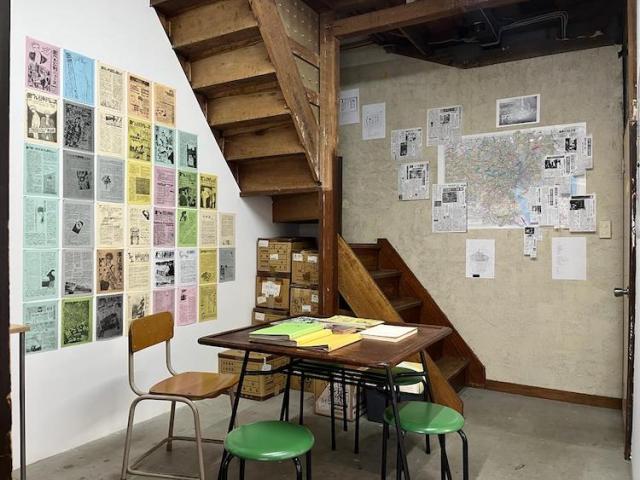
Installation view of News from K at Asakusa
In the downstairs space, Asakusa presents an array of materials related to Kamata’s case, including newspaper clippings, a map marking key sites and support group gazettes. Piles of books also line the walls on both floors: yellowing paperbacks and hardbacks, supposedly a fraction of the volumes that Kamata has read while serving his sentence. Like many other radicals (and also Nagayama), Kamata has himself published from behind bars.
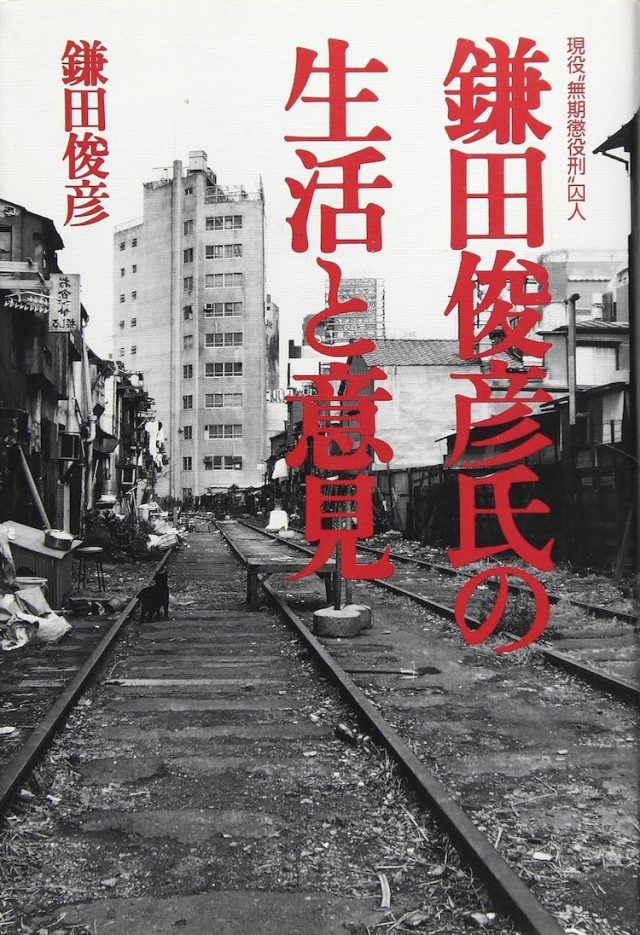
Kamata Toshihiko’s book, published in 1997
A book by Kamata’s brother, Katsumi, by published in 2015. After participating in campus activism while a student at Hōsei University in 1968, he was named as a suspect in the 1971 bombing and (like his sibling) went on the run for around eight years. He was caught and served seven and a half years in prison. Upon release in 1988, he set up a demolition business. He died in December 2014 at the age of sixty-six.
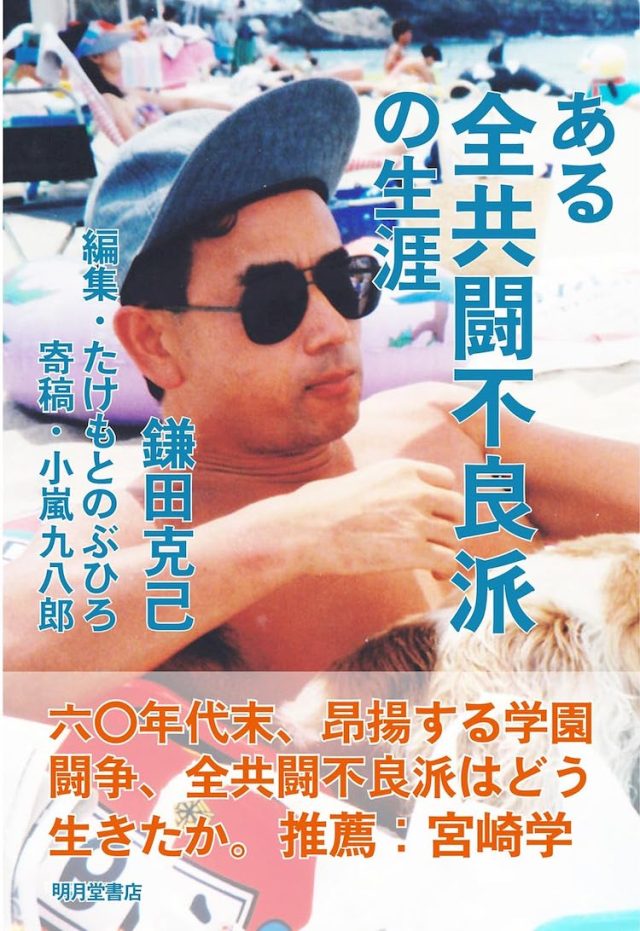
Kamata Katsumi’s book, published in 2015
In this way, the two floors form a repository of materials about an invisible, forgotten radical. “The exhibition space is envisioned as a platform for reflection and debate about the prospects for social change,” as the publicity text posits.
The multimedia approach to how Holzfeind’s project is exhibited recalls Also Known As Jihadi, another work heavily influenced by landscape theory and A.K.A. Serial Killer. Éric Baudelaire’s film, which marks his third made either in collaboration with or in response to the work of Adachi Masao, incorporates judicial documents and other materials alongside landscapes as another means of narrating the trajectory of an unseen radical (in this case, a jihadi), and the state power that lurks behind it. In the process, he extends and enriches the original landscape theory filmic practice in Japan.
In an interview with the curator Anna Gritz from 2017, Baudelaire explains:
I am not interested in a dogmatic way in the so-called landscape theory. Not as a disciple. I am interested in its potential to raise questions about the social and political context of a place, and the relationship between this context and the kind of alienation that leads certain individuals toward trajectories of violence. It seemed like an interesting starting point to explore the journey undertaken by the young man who is the subject of Also Known As Jihadi. But the title is also important: it implies that the true nature of this person remains hors champs, outside of the frame. The film is about what he is “also known as.” I use the landscape theory as a foil because I accept the notion that it fails, that it is inexact, that it raises questions instead of giving answers, and this is the only position I feel capable of adopting for a film like this. The same ambiguity is true about the surveillance and judicial documents that form the narrative track of the film. They tell a story. But it’s the story told by the state surveillance and judicial apparatus in the face of a phenomenon it doesn’t really know how to process.
We too, in the Tokyo of 2023, do not know how to process a figure like Kamata, an inconvenient part of the Long Sixties’ legacy that doesn’t easily transmute into a nostalgic memoir, a sentimental movie, a visually striking photographic retrospective. The state has hidden Kamata from view and the culture has moved on.
Unsurprisingly for a work so focused on the fate of an activist, News from K is politically engaged in its own right: it is, as Asakusa says, “casting doubt on the efficacy of the current legal system”. On the final weekend of the exhibition, a used book fair will be held to sell Kamata’s books and encourage the public to contemplate what it means to read in prison, especially when you are serving a full-life sentence. This event follows on from similar ones held at Shinjuku infoshop Irregular Rhythm Asylum: another Kamata-related book fair in December last year, and a series of sessions over the course of 2023 where activists from the Letters Slash Walls Writing Collective came together at IRA to write letters to those languishing behind bars.
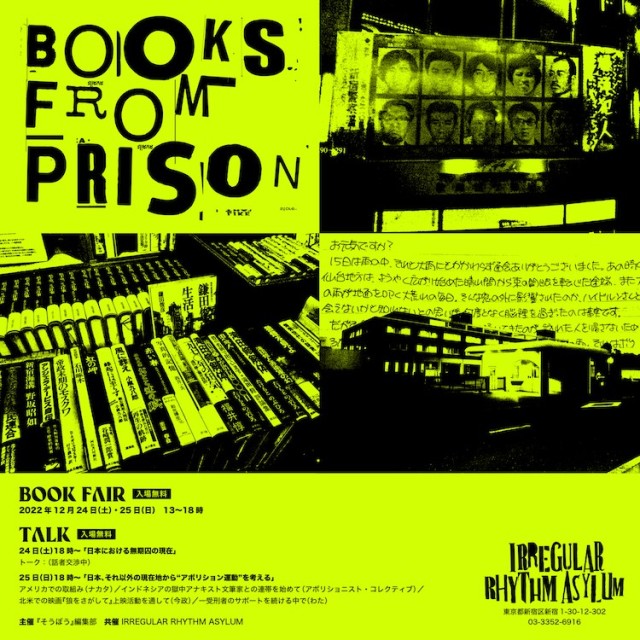
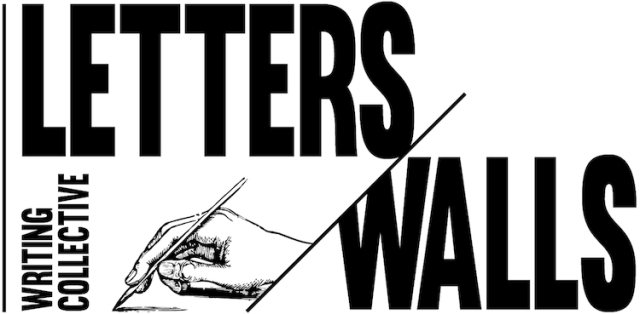
Out of sight, out of mind, as the saying goes. But the collective poignantly argues that “we believe that we will only know the reality of our society or what our society consists of when we listen to the voices of those in prison or pushed to the margins of our society”. And this includes people like Kamata Toshihiko, even if — or rather precisely because — the events seem like the distant past and the tactics he employed so utterly divorced from our present reality.
Heidrun Holzfeind: News From K
Asakusa
27 October to 3 December, 2023
https://www.asakusa-o.com/en/news-from-k/
WILLIAM ANDREWS

